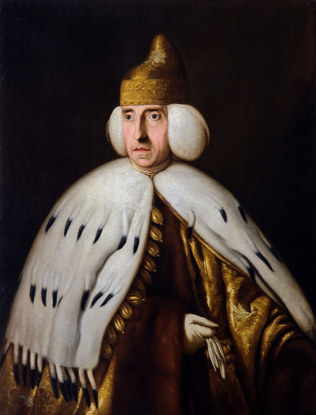The Fifth Department of Ravenna
Election of the Doge of the Republic of Venice
The Doge of Venice was the head of the Republic of Venice from the VIII to the XVIII centuries. Although the word Doge (Venezian: Doxe) is related to the English word duke, his role was not comparable to the English meaning of the word, and he did not rule hereditarily.

The last Doge, Ludovico Manin
Instead, the Doge was elected through a very convoluted process, with only minor changes since 1268.
The process consisted of 10 rounds, each of which established an electoral college, which were not permitted to contain more than one member of the same family.
The Great Council of oligarchs came together and put into an urn the ballots of all councillors aged 30 or over. The youngest councillor then went into St. Mark's Square, and the first boy he saw was to draw from the urn lots for each councillor, until 30 were chosen to comprise the next electoral college.
These 30 were then reduced by lot to 9. These 9 gathered together, at which point with the favour of at least 7 of the 9, the 9 elected the subsequent council of 40.
This council of 40 was then reduced to 12 via lot, and the 12 hence elected the 25, with the approval of 9. And henceforth, the 25 were reduced down to the 9 via lot, and the 9 elected the 45 via the approval of the 7, and henceforth the 45 were reduced down to the the 11, whom the 41 were elected by the decree of the 9, leading to the consequent proclamation of the title of Doge, conferred by the final decision of the 25 from the 41, upon one man who was subsequently distinguished with the title of Doge of Venice.
You can read more about the election of the Doge in this paper on the TBL-net.